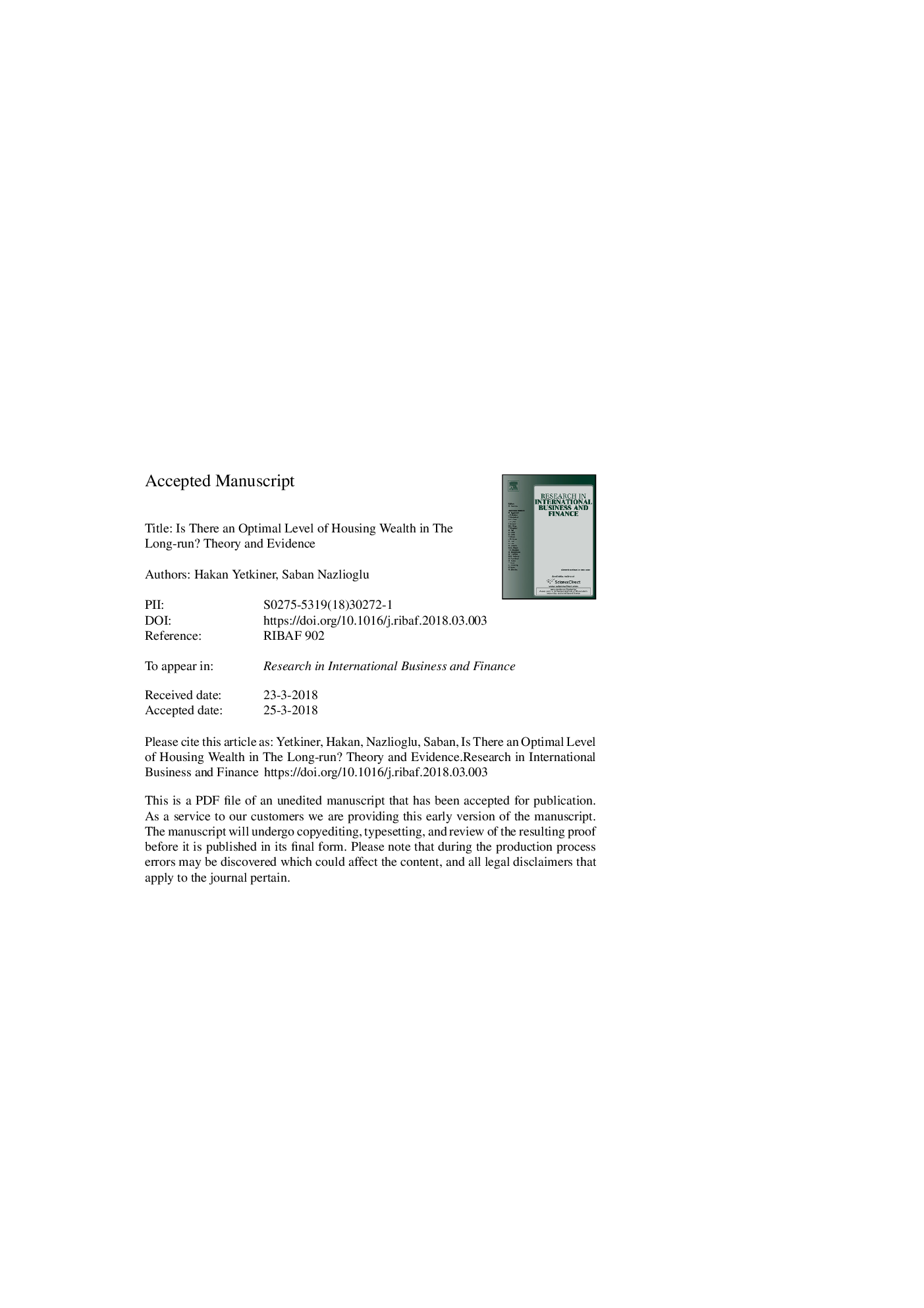| Article ID | Journal | Published Year | Pages | File Type |
|---|---|---|---|---|
| 10226883 | Research in International Business and Finance | 2018 | 29 Pages |
Abstract
This paper studies the optimal level of housing wealth theoretically and empirically. It first develops a housing model based on the wealth effects on the optimal growth path model of Kurz (1968) and shows that there is an optimal ratio between the housing wealth and income (h-y ratio), housing wealth and consumption (h-c ratio), and housing wealth and total wealth (h-w ratio). The paper next shows that the calibrated h-y, h-c and h-w ratios are markedly consistent with the US data, the benchmark economy. In particular, it confirms that they are about 1.5, 2.2, and 0.35, respectively. Finally, the paper econometrically investigates the long run relationship between h-y, h-c, and h-w in the US economy, using the cointegration approach with structural shift. The empirical analyses show that (i) there is a long-run cointegration relation for the variables of interest, (ii) the estimated long-run response of housing wealth to income, to consumption and to total wealth are consistent with stylized values, and (iii) the time varying responses of housing wealth adequately reflect the effects of some major shocks in the US economy. As a policy implication, we argue that an economy having h-y, h-c, and h-w ratios substantially higher than the optimal values may be considered to indicate a bubble in housing, which may imply waste of its productive resources invested in a non-productive asset, and hence intervention of policy maker with contractionary policies.
Related Topics
Social Sciences and Humanities
Business, Management and Accounting
Business and International Management
Authors
Hakan Yetkiner, Saban Nazlioglu,
